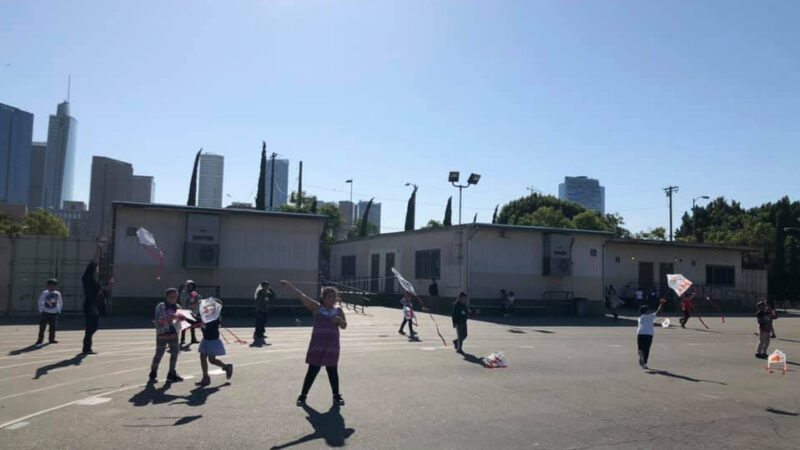Schools within the Los Angeles Unified School District (LAUSD) are frequently characterized by a high percentage of concrete and asphalt, with little greenspace or tree cover. The lack of green space may impact student health, particularly in disadvantaged communities, including overheating and increased cases and severity of respiratory illness. Impervious surfaces on school campuses are also a significant source of stormwater runoff, the leading source of surface water pollution in the Los Angeles region. When it rains, rather than being soaked up by natural filters like trees and soil, the rainfall runs off paved surfaces, collects contaminants like bacteria and pathogens, oils and metals, or trash, and enters storm drains to be discharged into nearby waters or the ocean with little or no treatment.
Converting impervious surfaces to greenspace at schools can both improve watershed health and improve accessibility and public health outcomes in disadvantaged and low-income communities throughout Los Angeles, while also providing students with more enjoyable environments. LAUSD owns approximately 6,368 acres of land, making it one of the largest landowners in the greater Los Angeles area and offering a strong opportunity for increasing overall community greenspace. Our team will work in collaboration with the Los Angeles Waterkeeper to identify school sites in the region that present opportunities for multi-benefit greening projects. Our analysis will include assessment of legal and regulatory requirements as well as possibilities for community joint use of new green spaces. We hope to present recommendations and guidelines to LAUSD that will empower them to adopt green solutions in more schools.
Team members: Karen Cederholm, Jesus Delgado, Mikayla James, Timothy Li, Gregorio Palomera, Prada Pothong, Sophia Stewart, and Martha Vilchis.
Client: Los Angeles Waterkeeper
Advisor: Professor Alvar Escriva-Bou

